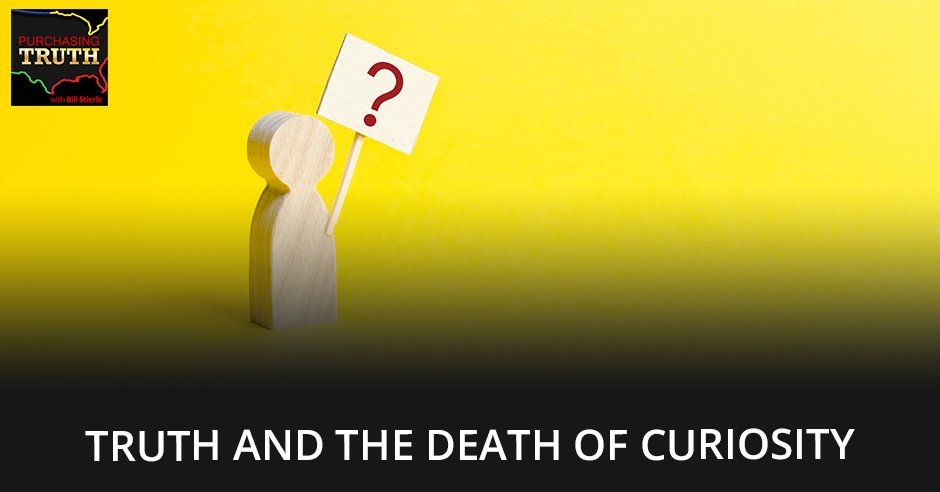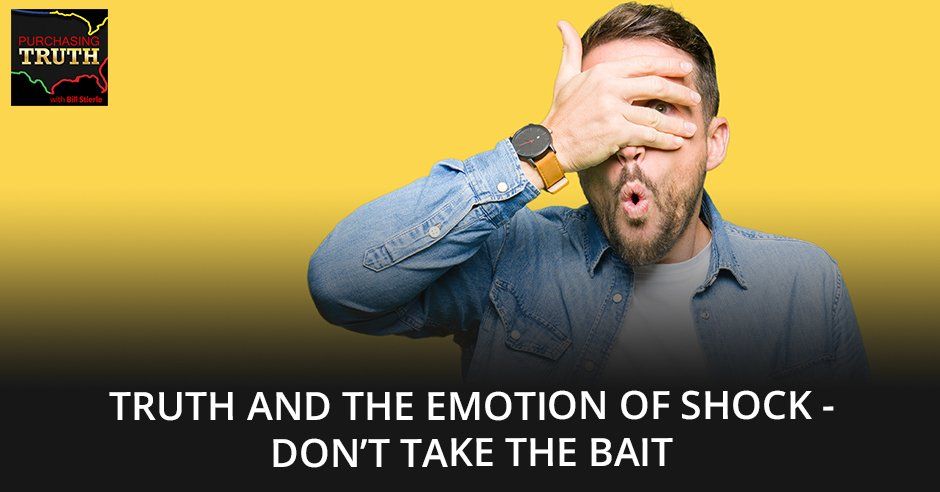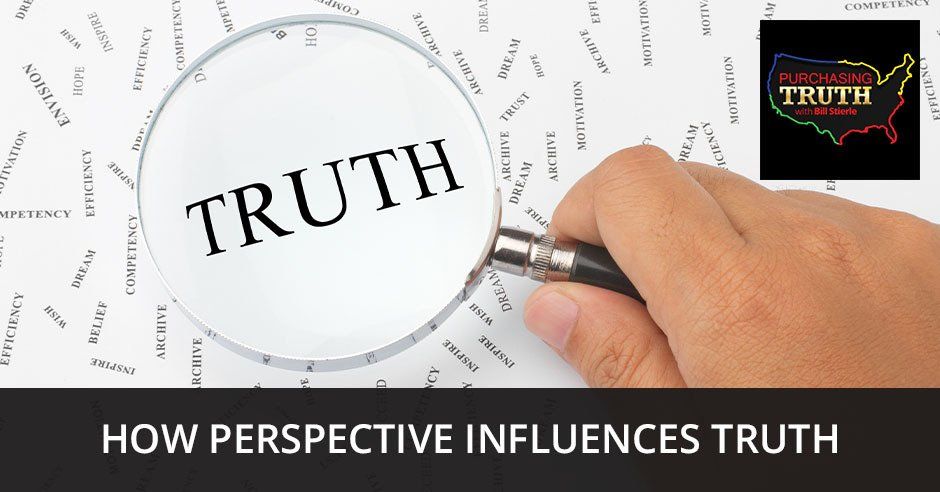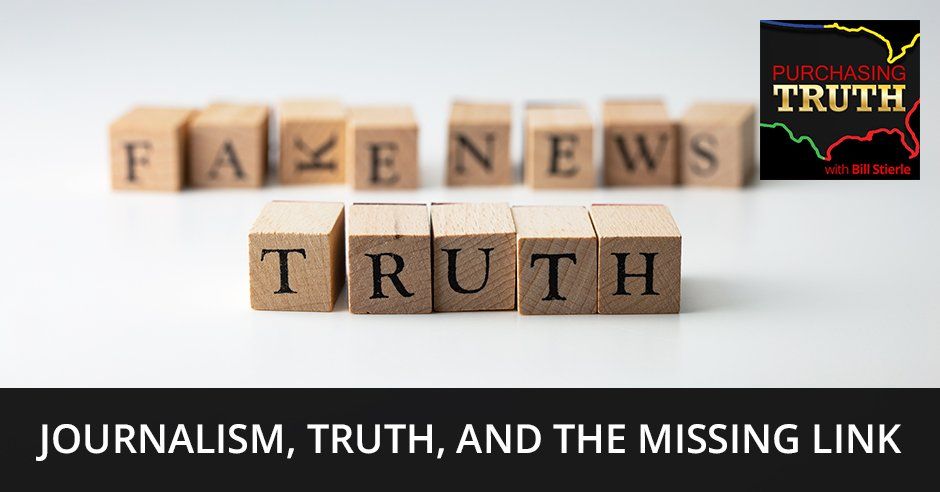Journalism, Truth, And The Missing Link
Subscribe Today!
Looking at the news these days can be discouraging and disappointing, especially with the lack of truth in journalism. In this episode, Bill Stierle and Tom discuss this shortage in the media, comparing journalists to fishes that are pulled in and hooked by a lure. They talk about the missing link in journalism and how journalists approach the government concerning the Coronavirus pandemic. They touch on the difference between sympathy and empathy and how Donald Trump’s responses could have been better. Lastly, Bill and Tom then enumerate the five forms of journalism and how they should be applied when reporting the news to the nation.
---
Watch this episode here
Bill, I’ve had more facepalm moments than ever. We have this worldwide tragedy going on. It’s the Coronavirus or COVID-19. As if that tragedy wasn’t bad enough, we’ve got an administration in the White House that the marketer in chief is trying to market his way to being a wartime president and the best leader possible now. Unfortunately, the tragic language coming out of the White House and behaviors would question his duty and his leadership every day. Press corps or journalists are guilty of a tragic process and use of language which isn’t going to reveal the truth at all. It’s a facepalm moment.
It is. We’ve been hanging out together and talking about how to get the truth to come forward and how to engage truth in a more effective way. The way journalists have been taught to pursue truth if we were to look it up, there are five forms of that. Whether it’s investigative, news articles, reviews, columns or features, the investigative style of journalism is not getting us there. The reviewing or asking questions in order to see facts and accurate information hasn’t helped us much because they change it into the pursuit of facts to the promotion of opinions.
A journalist will pursue a fact and he changes it into trying to reinforce an opinion. That’s what he does. He gets them to reinforce an opinion. Meanwhile, it’s like, “This is not an opinion. We have this piece of information. We’re asking your take about it.” He says, “That’s fake news because you’re asking opinion and you’re trying to reinforce an opinion from the liberal media.” Notice all of a sudden that it’s like, “I am taking the journalists in. I am not playing their game. I am having them play my game,” which is a branding marketing sales game.
Here’s this neat thing with a shiny lure. I’m going to throw this lure in the water with a string attached and pull it like I’m fishing. As soon as you bite the hook, you have been sold. That’s the thing. It’s a shiny lure, throw it in the water and jiggle it as you’re pulling the fishing rod and reeling it in. For all those fishermen, they know exactly what I mean. It’s a jiggling lure moving through the water. As soon as the person bites it, they’re hooked. The journalist doesn’t even know that they are on the hook. They think, “I’m a smart fish.”
I’m sorry. I had to laugh but that is funny and you’re right, “The hooks are not going to get me.”
The answer is, why swim after the hook to begin with? They miss the space between the stimulus and the response. The stimulus is the lure. The response is them going after and biting it. Having empathy and compassion for the lure swimming by is like, “Nice lure, I’m not biting it.” Even if the fact is not true. That’s not what’s going to help.
This is a good metaphor, Bill. I like it. At first, I was like, “Where’s he going with this fishing thing?” I get it but the difference is the journalist instead of asking a question and framing it in such a way to say, “Mr. President, that is the most beautiful lure I’ve ever seen, wouldn’t you agree?” He would say, “Yes.” Instead, they’re saying, “That lure is not live bait. It’s fake.” He’s like, “No, it’s not fake. That’s the most beautiful fish food you’ve ever seen.”
You’ve got to comment on the lure from an empathetic, compassionate way. It’s like the way the speaker would take it. They reel it in and they have no fish on the hook because you didn’t take the bait. They don’t make the issue about lamestream media that they’ve been labeled or fake news that they’ve been labeled. No. You use it the way you need to use it, which is, “Mr. President, you feel confident. You would like Americans to get back to work. Is that correct?” “Yes.” “It sounds like you would like to let them go back to work sooner, wouldn’t you?” “Yes.” “You would like the economy to get started because one of the things that you enjoy is the stock market to stay high. Is that correct?” “Yes.”
He’s reeling the lure back in and he doesn’t know that they’re not on the hook. He’s having to own his motive. They don’t get him to own his motive. His motive is to appear strong, confident, respectful, rich, high self-worth, and high identity. I call them the Magic Three. After these three yeses, they start to run out of steam because they’re tired of throwing the lure out and reeling the lure back and not catching anybody. The journalist is like a school hungry fish. If one of them won’t take it, the other one will take it. Take the hook and he’s got one of them on the line. He waits for it.
There’s a huge reason why those press conferences are happening now. It gives them the opportunity to fish for counter-narratives to reinforce on the stage during the Republican National Convention. He’s looking for sentences. Remember when that reporter said, “Fake news.” No. It was naïve, under-skilled, to label and diagnose journalists that don’t know how to manage somebody that is in this space. He’s not interested in truth in government. He’s not even interested in truth from his advisors fully.
He isn’t interested in truth and his personal life. All he’s interested in is winning. Whatever it takes to win, to him, is where his moral compass is. It’s like, “If I’m winning, I’m good. If I’m losing, I’m bad and I always need to be winning because that’s my brand.”
I’ve got to think about this. His off-ramp is bankruptcy. He’s taken the off-ramp of bankruptcy many times and is assigned the blame or judgment of others that caused his exquisite leadership to fail. The people have got to realize that this experience of bankruptcy is when all is lost and you’ve got to pick up the pieces at the end. Everybody’s got to mourn the losses, and in this case, we’re mourning deaths, financial security, national and international respect, and cooperation and collaboration. Anybody that picks a side is not trying to work in an adult-like way. All they’re doing is my way on the highway.
The missing link is how do we engage the process of being compassionate to somebody who has had multiple experiences of bankruptcy and trying to get them trying to walk them off the cliff before he takes us over the cliff. He’s taken a bunch of people over the cliff now even to death. It’s disturbing to be honest about it. People have died because of lack of preparation and protection. If journalists were to start leading with words like protection, safety, prevention and throw him a few softballs that he can hit so the audience will realize that he’s under-skilled at this style of the administration. He’s under-skilled about dealing with an invisible threat and what the Constitution says about what his powers are because he thinks it one way but it’s not. It’s not that way.
I’d like to add that he’s under-skilled in his ability to provide the nation with what it needs to meet its biggest need now which is for safety, security, and uncertainty. That takes emotional intelligence and empathy. We’ve talked about this 4 or 5 episodes ago. I don’t want to go down too deep, but it’s a good example here. The President was served up a slow-pitch softball by Peter Alexander of NBC News. He said, “Mr. President, what do you say about two Americans that are worried?” There was a lot that came before that and the President had it in his mind that Peter Alexander was not being respectful to him being the President and he was annoyed by that.
The President did not even realize this was a slow pitch softball that he could have knocked out of the park as a home run. If he had only said, “I understand Americans are concerned and that’s understandable, and here’s what I have to say to them.” He could have turned this into such the father figure presidential moment with ease and won the moment. That would have been the story. President Donald Trump, the Father-in-Chief or the Leader, and all this stuff. It would have been so easy for him to do. He would have not had to back off of any of his other positions, beliefs, or policies if he could have been a comforting father for a minute and he was incapable of it. We talked about IQ and EQ. He doesn’t have the emotional wherewithal to do something.
There’s a scale in which I have one of my slide decks. It’s a scale of how do you know if you are good at emotional intelligence. How can we measure somebody being empathetic? I developed this scale so that at least it can give people some personal perspective of what it takes to both do empathy for yourself when you’re upset, empathy for another when they’re upset, or empathy with an entire group when they’re upset. That’s the top skill you can do with a group of people. It’s one thing to do it with yourself. It’s one thing to do it with another person.
Journalists are like a school of hungry fish. If one of them won't take the lure, the other one will.
CLICK TO TWEET
It’s like a driver’s license. Everybody thinks they’re a good driver. As soon as you mentioned the word empathy, everybody says, “I’m pretty good at that.” Probably 80% of people say, “I have the empathy thing down.” Until you say, “I want to let you know that one of my clients has COVID. What would you say to them?” They’re deer in the headlights and they come up with a sympathetic statement, “I’m so sorry to hear that.” That is sympathetic, that is not an empathetic statement. They can’t even empathize with themselves. If I say I have a client that has COVID, here’s what could show up in their body, “Was Bill exposed? I’m scared.” That’s what could show up in their body. They don’t even know how quickly that took place. They can’t even catch it there so their emotional intelligence school score is below a four. “Bill, I hear that your client has COVID. I feel a little worried and scared and I need some safety and protection. Were you exposed?”
They can’t even realize that they’ve been activated and they take two steps back, “Why were they exposed?” They’re trying to do what the journalists are trying to do trying to figure out if they’re in danger or figure out as journalists do. It’s like, “That’s not the truth, Mr. President.” They’re trying to swirl it instead of being compassionate and empathetic to the President and what his motive is. Peter Alexander’s motive would have been something like this, “Mr. President, I’m guessing that you’re feeling enthusiastic and you’re trying to convey that enthusiasm to the Americans that we’re going to be alright and we’re going to get through this. Is that correct?” “Yes.”
What he’s doing is being compassionate and empathetic for the President being a pitchman. You can’t say, “Mr. President, you’re being a pitchman and trying to paint rosy-colored glasses on this.” The President never had the opportunity to spend time in loss ever because he goes, “What did that cost me? I didn’t lose too much but look at the brand recognition I got out of it. Look at all the people. I had a great time at that party over there. Look at my ratings. That means it’s marketed well.” That also means he’s a brander, seller, trafficking, and fishing lures. All of a sudden, my comic brain went up. I could see President Donald Trump holding a suit coat open with fishing lures hanging on the inside and the reporters asking him questions. Let’s draw that comic up.
Where’s the New Yorker cartoonist when you need them?
He opens up, pulls a fishing lure out, and throws it out and one of the reporters is going to bite into it.
That would be an interesting teaching moment in journalism school about this metaphor of the President is fishing amongst all of you journalists sitting there in the press corps in the White House briefing room and the majority of them are taking the bait. It’s always taking it and going after the lure whether it’s the Fox News journalists who are going to give the President what he wants and bite the hook directly. Maybe it’s the journalists who are trying to get at the truth, who are not going to bite the lure but are going to flatter him about the lure to reveal the truth, despite to entice the President to reveal the truth without even realizing that he’s doing it.
Many times, empathy is not a ventilation strategy. Empathy is a strategy of connecting to where the person is and getting the person in the agreement that this thing is important and meaningful to me. Also, gently having them see that there’s another side and they would benefit from at least seeing the other side. Not doing the other side, at least seeing the other side. If my kid is asking me for ice cream at 4:45 and I’ve got dinner coming up in 15 or 20 minutes, I don’t want to talk him out of ice cream. He likes ice cream. Why do I want that fight? I’ll empathize with ice cream.
He’s still not getting ice cream, but I’m still going to empathize with the ice cream. Why? It’s because I’m focusing on health. He’s focusing on taste. Do I want to talk him out of his taste? Do I want to tell him his taste is bad? Do I tell him that this taste is more important to that taste? It’s like, “I want to empathize with where he is. I don’t want to talk him out of it.” That’s what reporters do. They get stuck in trying to go like, “You can’t have ice cream. That’s not true.” They’re going to be like, “This is great ice cream. I want ice cream.” That’s what the missing link is. It’s to get three empathetic moments as he is trying to put the lure in front of them and do your best.
I know you want to prove and get him to double down on stuff and it does make him look worse but what happens is people are dying as you’re doing it. You may want him to go to a place to, “I’m in charge of this thing, and here’s another event during my presidency where another upheaval has happened. This is if I were to count on a small scale, the fourth upheaval in this experience over the four years but there’s more. I have to think about how many upheavals the nation’s been through.” Should we make a list? The Mueller Report, the impeachment, the perfect phone call, and all kinds of upheavals.
We want to be empathetic and compassionate to the President. It doesn’t mean we want to be in agreement necessarily with his version. The people that are already voting for him are already on the hook. They’re already in the boat and the bucket. They literally do not have half the idea, regrettably and now that I’m saying it, I’m getting sad. They are in the bucket in there and they’ll soon die. They’re not going to make it out of the bucket. There have been many people. We’re up to over 22,000 now that have passed over this because the function of the federal government used to be proactive protection. Keep the disease in other people’s countries. Keep it over there. Don’t let somebody’s disease land on your shores. Don’t do it. If it does, quarantine the crap out of it.
There was one Ebola person that showed and there was 7, 10, or 15 around that person. They had a tent, quarantine, fences and they had that person in New York City and all the Fox News people and what President Donald Trump could say is, “Barack Obama let this get to our shores.” There was one person and they threw I would say millions of dollars to keep it to be only one person. That’s the truth that it’s hard to get ahold of because it’s a perspective of looking at the whole world rather than a perspective of looking at the world is a flat disc. We’re moving from one flat disc to the next.
Bill, journalists are taught to go after facts. There’s either the news approach, which is direct to who, where, why, what, when, and how of things. What we see these journalists in the press corps doing daily is trying to get the President to state facts, agree with facts or they’re trying to put facts in front of him and get him to admit something he’s probably never going to admit willingly. That’s not productive. You’ve got these five styles that journalists are taught, investigative journalism, news, articles, reviews, columns, and features and each has a different purpose and focus. It appears nobody is teaching journalists, and we need to come up with a name for this, to empathize with who they’re talking to in order to get out the real truth.
One great example you and I were talking about came from 60 Minutes and it’s different. It may be a good example because it was not involving the President directly so it’s good to show a different example. It was probably what is thought of as one of the news organizations that have the most integrity, which is CBS and 60 Minutes, which is decidedly an investigative news program. These people do their homework. I forgot the journalist’s name, but he was interviewing Peter Navarro of the current administration.
They get into a tense discussion where Peter Navarro is feeling on the defense and saying, “Nobody knew that this pandemic was coming. Nobody could have prepared.” This is what we hear coming out of the President from the podium a lot, “Nobody knew. We’re doing the best job possible.” Navarro says, “You never asked the Obama administration about anything regarding pandemic response and you guys haven’t done a story on this in the past with administrations. Why are you picking on us, the current administration?” The CBS anchor, the interviewer said, “I guarantee you we have. I guarantee you we asked the question during the Obama administration.” That was a tragic moment. Let’s talk about that, Bill.
I appreciate you bringing up this example because the need for respect, truth, recognition and acknowledgment gets in the way of finding the truth. It’s the reporter saying, “I am confident that we did.” He stated his truth in a respectful way. Regrettably, that’s a part of the polarization we’re experiencing now between Democrats and Republicans. They aren’t respecting each other or going for what their point of view is. They’re allowed to because of money. They’re allowed to participate in more silos because they’re not accountable to the people. They are accountable to the donors. Let’s get back to what this reporter could have done.
As you were asking me the question to coin a new kite type of journalism, I might have it, but we don’t have to settle on it now. I’m the journalist and Peter Navarro says, “Show me a story that you have done in 60 Minutes about the Obama administration.” They did two of them. One for the H1N1 and one for Ebola. It was in-depth reporting of the scope, how the federal government was handling it, the mistakes, the learning lessons, where people stubbed their toes, what the nation had and didn’t have, ways the nation improved and made changes in order for it not to happen and the mitigation. Most certainly, we dodged this bullet for XYZ reason.
The exasperation that showed up on my voice is what the journalist needed to do is say this sentence, “Mr. Navarro, you and the President have confidence that 60 minutes has never done a story like this. You would like us to have the same scrutiny over the Obama administration as we do under your administration, is that correct?” What he did was he had to say, “Yes, I would like you to have the same level of scrutiny.” “You would like us to have asked then the same hard questions that we’re asking you regarding preparedness, protection, and safety. You would like us to ask them the same questions. Is that correct?” “Yes. There was never a story about it.” “It sounds like during the research and preparation for this pandemic, you, the President, and his team might have gone back and looked at other pandemics that might have been coming our way and did some things about it and prepared for it.”
“Yes.”
All of a sudden, Navarro is not out there but the entire team is out there. This is a way to collaborate with the journalist with where the person is in their belief structure, mindset, and their marketing messages. Donald Trump Good, Barack Obama Bad. That’s been a consistent marketing branding message. President Donald Trump can fire people on a reality TV show. Barack Obama has eight years as the President, what has he done? This guy, a decision-maker is going to be better than that decision-maker. Everybody knows the authoritarian father never makes a mistake. How did that feel as soon as I use this collaborative style of journalism going, “Let’s collaborate with the person I’m speaking with,” rather than trying to fight, prove, disprove, and do one-upmanship? How does that sound to you? Does that sound a little bit better?
It sounds much better. It becomes less combative and contentious. When you go down that combative and contentious path, the person you’re asking questions to is going to shut down. They’re going to get indignant. It is not going to yield the results you want unless the results you want are to make somebody have a tantrum, because that’s good for ratings. If that’s your goal, to me you’re no better than Morton Downey Jr. Show or what were some of these other ones that did that a lot where they try to get everybody angry at each other in a big catastrophic climax.
The Jerry Springer Show. It’s the Jerry Springer style of reality TV. There are a couple of other folks that stir the pot. Let people fight and film it.
That’s what happened. The Monday after Easter of 2020 was one of the most combative, contentious White House Coronavirus press briefings that have existed yet. It’s amazing that we can keep raising that peak level higher and higher as we go through history here in this administration. President Donald Trump was fighting back. He’s received a lot of criticism and he was receiving it in that press briefing. He’s this cat that’s backed into a corner who is going to claw his way out any way possible. Unless you do what you’re suggesting, what the CBS anchor could have done on 60 Minutes, and what the White House Press Corps and the journalists could do there. Unless you collaborate and bring some empathy, compassion, and meet that person you’re questioning where they are first, you’ll be more productive and get some of the answers you want. It will be revealed, but they’re not taught this.
It’s the sixth thing on the list. A collaborative journalism style is something. My creative brain started going all over the place here. Maybe I can do an online course that all these universities can sell because they can’t deal with these kinds of people. The scrutiny that politicians are going to be under forward is like a psychologically wounded nation. Whether we like it or not, we have some big troubles showing up for us because this is not a localized New Orleans Katrina event. This is a nationwide trauma and worldwide trauma. The world trauma is here’s how these other countries have to recover after the psychological threat of here is a disease that can take you out, and you don’t want to take it and don’t want to get it and you’ve got to isolate yourself.
Let me say it this way and it will get unsettling. Our naiveté about protection and safety has been pulled back. This is something the military can’t fight. In fact, it got into one of the big ships. You can’t fight this. It’s not an easy enemy and it also doesn’t hurt that it also went after the system that has a lot of brokenness to it, which is our healthcare system. All of a sudden, that stuff has got to be rethought. Whether it’s Italy that does have socialized medicine and still didn’t take the preventative and protective things and, of course, didn’t have enough ventilators and preparation coming in and it ran through their wall like wildfire in some of the inclusive countries inside Italy and as well as inside the United States.
I was on a restorative project in a school district outside of New Orleans and it was 1.5 years after Katrina. The kids that were in school were traumatized. They couldn’t learn hardly anything. They didn’t know when the next hurricane was coming. Their perspective was, “These bad things happened. People we knew died. Since we’re eight-year-olds, we don’t know when the next one is coming.” An eight-year-old doesn’t have a perspective that these kinds of events don’t happen. All the nation needed to do is, “Here’s this other virus coming from this other country in 3 or 5 years and we’ll go nuts with the next one. Remember the last time? We hate doing that.” We are going to be facing some unsettling experiences coming up because of the level of that trauma taking place.
I was on the phone with a client and he had gotten COVID and recovered seventeen days in isolation. Luckily, he didn’t have to go to the hospital. He dodged that bullet but lost his company and had to shutter it. He had to let everybody go and had to put a house on the market. He couldn’t do anything about it because there’s no money to pay for stuff. He had to re-shelter himself in a different location with his family so they’re also with him. It’s burdensome.
To back around to collaborative journalism and one that applies empathy is, “Mr. President, you want everybody to know that you’re in charge. Is that why you’re saying that you have the ultimate decision that your decisions last?” He’s talking like an authoritarian. He’s going like, “This nation is a collaborative process. It is not an authoritarian process.” The more Joe Biden gets on to that narrative, the better off he’ll do. You’ve got to get people to participate in democracy and not isolate in separation. You can’t do that. There are all these different convoluted metaphors because he came into office as an isolationist and he’s going to leave his office with all of us in isolation. To take the orbital view of this.
You could take this analogy even further that he is separating, dividing, and isolating them more. It’s like, “You’re either on my team or you’re not in my team. You’re for me or you’re against me. You, the journalists, are the enemy of the state and are no good because you’re always against me.” He is not someone that brings people together. That’s where these journalists to me are again so tragic. In that 60 Minutes interview, he got to the point where he retreated to arguing facts with Peter Navarro. “I guarantee you, we ran that story. I’m quite sure we did.” Don’t do that. That didn’t make any sense. It’s interesting. Their method was to get Peter Navarro to say, “There’s no way you did that.” Nobody ever did that and all they did afterward was play the clips of the three different 60 Minutes stories from 2005, 2009 maybe, and 2012. It’s from George W. Bush’s administration to Barack Obama’s and they only said in the end, “I’m right and you’re wrong.” That’s all that journalists did.
That’s all that happened there. I’m right, you’re wrong. We’re better, you’re not. We’re standing for truth. Instead of letting the guy fall on the sword. Don’t bring a sword up and say, “I’m going to cut your head off,” because what winds up happening is that level of truth is not as important as the discharge of empathy for every voter that is loyal to President Donald Trump that needs an off-ramp. All of them need off-ramps to kind of help them out. The poor Republicans need an off-ramp. They need something you get off. They can’t. They’re crack cocaine-addicted to this guy and experience. It’s hard to be honest with that.
Maybe that actually learns something and potentially change their behavior going forward. When they feel this sense of guilt and shame that even if they don’t say it, they would think, “My statement was really wrong there. I should have done my homework first. Maybe we didn’t respond fast enough.” President Donald Trump is capable of that himself in terms of admitting guilt or apologizing for anything.
Anybody that does it, admits guilt or admits weakness, he fires, from Jeff Sessions and on. Anybody that shows weakness. It’s like he doesn’t even know how to do his own off-ramps other than firing somebody. For somebody that knows the smartest people, and we have the best people, and firing all of his own smartest people is an unsettling truth. At the same time, the smart person knows how to collaborate and cooperate with others and get them to do stuff and cover their butt for things they don’t know. We used to poke fun at George W. Bush, but at least he had people around him. He doesn’t even let the people around him help him fully.
In fact, you’re right. The people who show weakness he gets rid of, people that he questions their loyalty, he gets rid of even faster. Even if they speak the truth or answer the truth under oath, “You didn’t support me and my team by toeing the line, meaning by lying for me, therefore, you’re out.” How did we get here, Bill?
That’s our own off-ramp for our next episode. How we’ve been sold and how President Donald Trump with his gifts and language of marketing and adjusting. We’ve done episodes on the dopamine adjustment he does with language and the enticement. It’s always about enticement, anticipation, and uncertainty. That’s his language style and all those things that the journalism folks don’t even know. They take the bait, enticement, anticipation, uncertainty, undeliverable reward, and amplify it. What they do is like, “Yikes.” It’s unsettling.
What we can do is talk about how we got here and also what the Republicans that want to do to restore their party can do and what the Democrats can do to have strength. Empathy is the position of strength always. People think of empathy as you’re submitting. It’s not submission. It’s like, “I’ll kick you in the forehead with empathy because you crossed my line and I know which line you crossed. I’ll let you know about it. If you don’t meet the need for respect, I am going to let you know about it.” Joe Biden during the debates and I’m guessing they’ll stay six feet apart from each other on the debate stage to keep the joke going. That’s the thing. It’s the strength of empathy to create a collaborative experience back again and to engage that in a way that it’s healthy.
Let’s talk about that next time. Another thing I want to tie into that is the way society is right now and how the Coronavirus is playing into this is we’re definitely getting into a pendulum swing toward a we cycle, not a me cycle. The President is all about me, not we. It’s interesting and we’ll see how this plays out. We’ll look forward to that one. Until next time, Bill. Thanks so much.
Take care.
Important Links:
Love the show? Subscribe, rate, review, and share!








